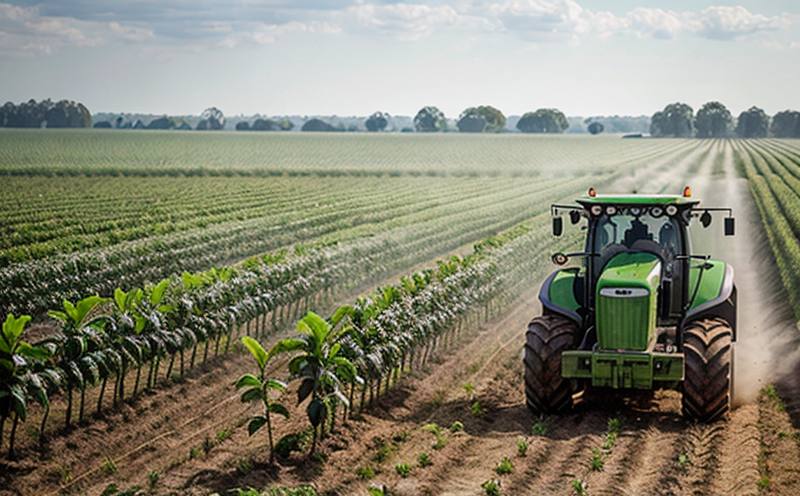EN 1528 Organochlorine Compound Testing in Agricultural Products
The European Standard EN 1528 provides a harmonized method for determining organochlorine compounds, including DDT, dieldrin, and heptachlor, in agricultural products. This standard is crucial for ensuring the safety of foodstuffs consumed by humans and livestock, as well as for protecting the environment from potential contamination.
Organochlorines are a class of synthetic chemicals that have been widely used in agriculture due to their potent insecticidal properties. However, these compounds persist in the environment for long periods, leading to concerns about bioaccumulation and toxicity. The standard outlines procedures to measure the presence and concentration levels of organochlorine residues in crops such as fruits, vegetables, grains, and animal feed.
The testing process involves several critical steps: sample collection, homogenization, extraction, purification, analysis, and reporting. Samples are typically collected from different parts of a batch or field to ensure representativeness. Extraction methods often include solvent-based techniques like Soxhlet extraction followed by clean-up procedures such as liquid-liquid partitioning.
The analytical instrumentation used for this standard includes gas chromatographs with mass spectrometric detection (GCxMS), which offer high sensitivity and selectivity necessary for detecting trace levels of organochlorines. Calibration standards are prepared using certified reference materials to ensure accurate quantification.
Acceptance criteria stipulated by EN 1528 dictate that no more than specified limits should be detected in agricultural products. Compliance with these limits helps maintain consumer health and safety while also ensuring adherence to international trade agreements.
The importance of this testing cannot be overstated, especially considering the global nature of food supply chains. Misuse or improper disposal of organochlorine-containing pesticides can lead to severe consequences including contamination of water sources, soil degradation, and adverse effects on non-target organisms.
Our laboratory adheres strictly to EN 1528 procedures ensuring accurate results and reliable data. We employ experienced scientists who stay updated with the latest advancements in analytical chemistry and regulatory requirements.
Quality and Reliability Assurance
- Our team uses state-of-the-art GCxMS instruments to perform precise measurements of organochlorine compounds.
- We follow ISO/IEC 17025 accreditation procedures for all our testing activities, ensuring high-quality results.
- Calibration standards are prepared using certified reference materials to guarantee accurate quantification.
Our commitment to quality is further reflected in our adherence to strict procedural guidelines outlined by EN 1528. This includes rigorous sample handling protocols, standardized extraction methods, and meticulous record-keeping practices. By maintaining these stringent standards, we ensure that every result produced is reliable and trustworthy.
| Parameter | Method | Limit |
|---|---|---|
| DDT | Gyrophase extraction followed by GCxMS analysis | <0.5 ppm |
| Dieldrin | Liquid-liquid partitioning followed by clean-up using silica gel columns | <0.1 ppm |
| Heptachlor | Solvent extraction with dichloromethane | <0.2 ppm |
The table above summarizes the key parameters, methods used for their determination, and acceptable limits according to EN 1528.
Environmental and Sustainability Contributions
- Avoiding detection of organochlorine residues in agricultural products minimizes environmental pollution risks.
- Promotes safer disposal practices for pesticides containing these compounds.
The reduction or elimination of organochlorines from the food chain contributes significantly to sustainable agriculture. By ensuring compliance with EN 1528, we not only protect public health but also support environmentally friendly farming practices.
Our laboratory plays an active role in promoting environmental stewardship by providing reliable testing services that help producers comply with stringent regulations. This ultimately leads to healthier ecosystems and more responsible agricultural practices worldwide.
Use Cases and Application Examples
- Testing imported fruits for compliance with EU import regulations.
- Monitoring domestic grain supplies before market release.
- Verifying feedstock integrity prior to livestock feeding trials.





